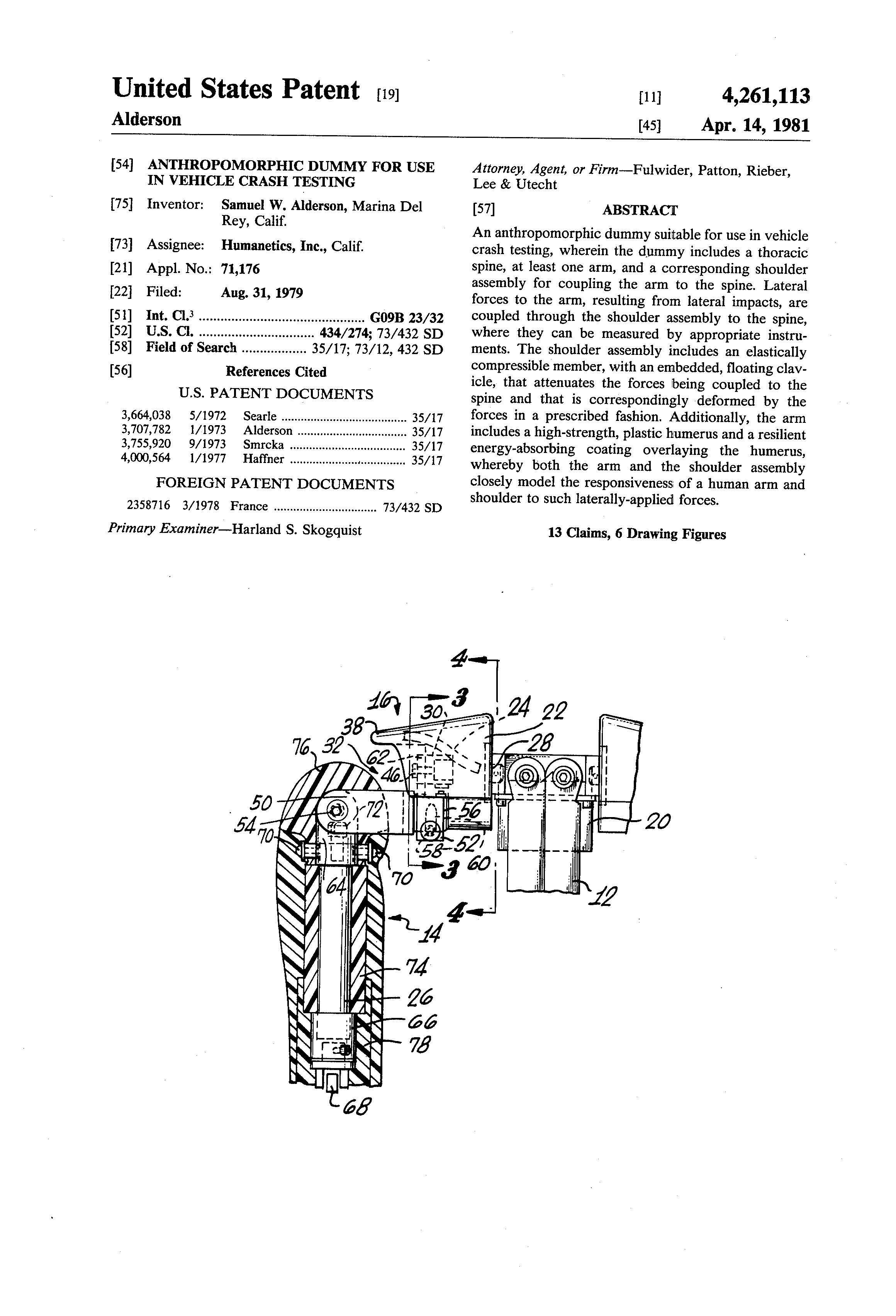On April 4, 1981, Samuel W. Alderson was granted the patent for “Anthropomorphic Dummy for Use in Vehicle Crash Testing” U.S Patent No. 4,261,113.
Before the 1950s, car manufacturers used living people to test safety features. Medical professionals and engineers would sometimes volunteer as crash test dummies. According to an article titled, “19,000 Animals Killed In Automotive Crash Tests”[1] roughly 19,000 animals, including dogs, rabbits, pigs, ferrets, mice, and rats were killed in automobile safety tests performed by General Motors. Today, neither people nor animals are used in automobile safety testing thanks to Samuel W. Alderson.
Samuel W. Alderson was born on October 21, 1914, in Cleveland, Ohio. His family moved to California where he graduated high school at the age of 15 and went on to attended numerous colleges. His father owned a sheet-metal and sign shop where Alderson would often work in between colleges. He attended Reed College, Caltech, Columbia University, and the University of California Berkeley. He completed his four-year degree and pursued a Ph.D. from UC-Berkley but did not end up completing his doctoral dissertation.
Alderson later worked for IBM where he designed motorized prosthetic arms. In 1952, he started his own company, Alderson Research Labs. Here, he created an arm based product that had mechanical manipulators for handling radioactive materials. Shortly after opening, he was awarded a contract to build and test an anthropometric dummy for aircraft ejection seats.
While Alderson was improving the safety of flights, the automobile industry was struggling with safety as automobile related deaths were on the rise. In need of a way to test and research safety features automobile companies used cadavers, unfortunately, they could not replicate consistent results as no two cadavers were the same. What they needed were human-like dummies that could be tested repeatedly yielding the same results.
The crash-test dummy did not take off until after 1965 when “Unsafe at Any Speed” written by Ralph Nader accused car manufacturers of resisting to introduce safety features. In 1968, Alderson created the first version of the dummy called the VIP. It was designed specifically for automobile testing; it had a steel ribcage, flexible joints, an articulated spine, and had the dimensions of an average adult male.
Today, crash test dummies come in many different forms and represent all different sizes and ages. These dummies are specialized for front, side, and rear impact collisions and have realistic joints with over 200 sensors mounted on the body. These sensors measure things such as the force of the blow, the torque of the neck, compression to the chest, and much more.
The crash test dummies’ sensors’ transmit roughly 10,000 bits of data a second. A typical crash test dummy costs around $600,000, luckily, they can last for up to 20 years.
Suiter Swantz IP is a full-service intellectual property law firm, based in Omaha, NE, serving all of Nebraska, Iowa, and South Dakota. If you have any intellectual property questions or need assistance with any patent, trademark, or copyright matters and would like to speak with one of our patent attorneys please contact us.


[1] https://www.nytimes.com/1991/09/28/us/19000-animals-killed-in-automotive-crash-tests.html